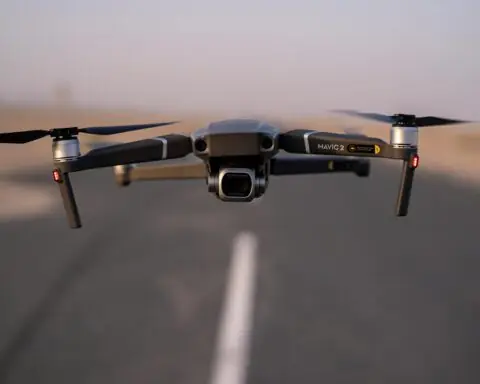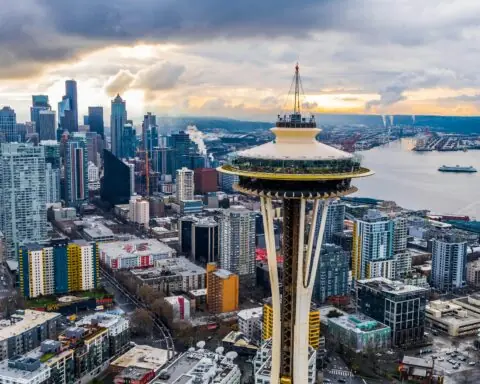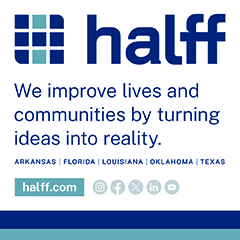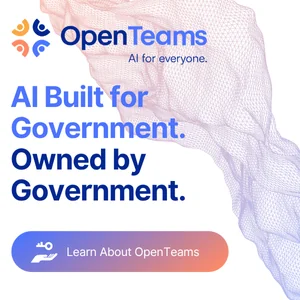States across the U.S. are turning to artificial intelligence (AI) and advanced technologies to transform how they maintain and manage roads, bridges and traffic. From generative-AI (genAI) experiments to strategic roadmapping and predictive bridge-maintenance tools, public works agencies are embracing a new era of smart infrastructure.
California
The California Department of Transportation (Caltrans), together with the California Department of Technology (CDT) and the Department of General Services (DGS), awarded contracts in May to several vendors to test genAI solutions for safety and congestion management. The awards follow an executive order from Gov. Gavin Newsom calling on state agencies to research GenAI and begin procurement for its deployment.
The state’s transportation secretary said California must use every available tool to work toward its goal of zero traffic fatalities by 2050. Deloitte Consulting, LLP and INRIX, Inc. are identifying which areas are the most dangerous for drivers and pedestrians, while Accenture, LLP and Deloitte will analyze the data to work toward improved traffic management.
After virtual testing, Caltrans, CDT and the chosen vendors will begin implementation of planned improvements on the state’s most dangerous and congested roads.
Texas
The Texas Department of Transportation (TxDOT) has enacted an AI Strategic Plan through fiscal year (FY) 2029. The blueprint is designed to guide the agency in its efforts to integrate AI into its infrastructure operations.
The plan outlines 230 potential AI use cases developed by engineers, IT specialists and planners statewide to improve traffic monitoring, incident detection, maintenance decisions and project delivery.
The strategy focuses on five key areas: optimizing infrastructure resiliency, data-driven decision making, enhancing stakeholder experience, unlocking workforce potential by automating routine work and ensuring security through governance, transparency and human oversight.
As part of the rollout, TxDOT has established an Acceptable Use of AI Policy and an AI Risk Management Workgroup to oversee ethical deployment, data privacy and accountability, positioning Texas as a leader in applying AI for transportation safety and operational efficiency.
TxDOT is already using AI, in conjunction with its camera network, for traffic data analysis and crash detection. Officials say the technology lowers response time for emergencies and roadside assistance.
Oklahoma
The Oklahoma Department of Transportation (ODOT) announced an initiative in October to centralize bridge inspection and condition data in the cloud, applying AI analytics. ODOT’s technical approach will involve migrating decades of inspection reports to Google Cloud’s BigQuery, using Google Dataplex for catalogs and data sharing.
The unified system will be a single source of truth for officials, enabling them to improve safety by identifying high-risk bridges earlier and to optimize maintenance resources. ODOT officials have already been working to migrate a wide variety of data from inconsistent sources into the cloud.
Eventually, ODOT intends to further advance their technological capabilities by using AI tools like Gemini in Looker to answer plain-language questions.
Delaware
The Delaware Department of Transportation (DelDOT) is making its streets safer through an AI-Integrated Transportation Management System (AI-ITMS), made possible by a federal grant. This program showcases the Federal Highway Administration’s (FHWA’s) initiative to raise awareness of AI in transportation systems management and operations.
The AI-ITMS program uses AI and machine-learning to monitor traffic, detect anomalies and optimize signal timing and other operations. DelDOT is deploying the AI-based system for multimodal traffic management, including analysis of traffic flows, signal timing and incident detection.
The program is constantly learning and adapting, much like a traffic engineer, according to officials.
Utah
The Utah Department of Transportation (UDOT) began piloting AI technology for traffic management in 2021, through Blyncsy, a local startup. The company’s tech, Payver, pulls data from crowdsourced video for the most recent information on roads in need of maintenance or improvement.
The data is available through a dashboard that can integrate with maintenance management software and organize necessary repairs according to need.
UDOT has continued to expand its use of AI to improve safety, earlier this year announcing it had awarded a contract to Econolite to deploy the Ouster BlueCity lidar-based traffic management system across more than 100 intersections in Utah. The expansion follows a pilot phase at a dozen or so intersections earlier this year and comes under a five-year agreement.
The system uses 3-D digital lidar combined with deep-learning AI software to detect and track vehicles, cyclists and pedestrians in real time, allowing for dynamic signal adjustments and enhanced safety features including detection of wrong-way driving and near-miss events. It integrates with UDOT’s existing traffic signal controllers.
Officials say they hope to modernize Utah’s traffic infrastructure by improving signal responsiveness, reducing congestion and safeguarding multimodal road users. It positions the state among the early adopters of advanced road management sensor technologies, with the first deployments already showing promising results.
Looking Forward
As transportation agencies across the country embrace AI and advanced technology, states such as California, Texas, Oklahoma, Delaware and Utah illustrate the diversity of applications — from generative modelling of traffic flows to automated asset inspection and real-time signal adjustment.
While state officials strive for improved safety, more efficient operations and smarter infrastructure use through AI, the journey from pilot to full-scale deployment is not without challenges. Agencies must address issues such as privacy concerns, cybersecurity, staff training and performance measurement. As more states scale their initiatives and share their results, the transportation sector may be on the cusp of a transformation in how roads, bridges and mobility systems are designed and managed.
Photo by Ruiyang Zhang from Pexels













